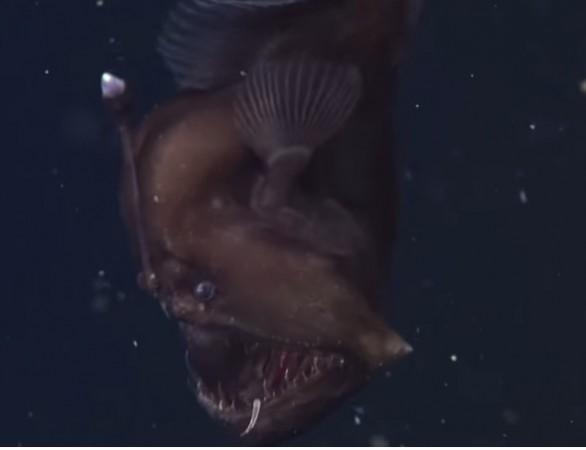
The fearsome sea-monster that terrified viewers in the Disney animation movie "Finding Nemo" is real. The formidable creature aptly named the "Black seadevil" was spotted in November by researchers in Monterey Bay off the coast of California.
The deep-sea-dwelling anglerfish was caught on camera for the first time in its natural habitat by researchers of the Monterey Bay Aquarium Research Institute and the film has been uploaded to the official MBARI YouTube channel. It was during a dive led by MBARI senior scientist Bruce Robison on 17 November that the researchers came across the sea monster from "Finding Nemo" about 580 meters below the surface of the ocean.
Anglerfish are rarely spotted and therefore, capturing the black seadevil on video is a big deal among those who study oceans. "Deepsea anglerfish are deep and elusive creatures that are very rarely observed in their natural habitat. Fewer than half a dozen have ever been captured on film or video by deep diving research vehicles," explains Robinson in the YouTube video.
Although the sea monster has been vilified by its portrayal in the Pixar-produced "Finding Nemo", the Black seamonster is only 3.5 inches (9 cm) long and lives in the deep dark waters of the Monterey Canyon.
The impressive pole attached to the head is the "fishing pole", used to attract prey. The shining spot lures smaller fishes and squids to the seamonster in the deep, dark ocean, and when they are close enough, the anglerfish inhales them using its huge mouth and traps them between the long, sharp teeth.
The black seamonster caught on MBARI video is a female, which you can tell by its size and the fishing pole, which is absent among the male members of the species. Male seamonsters also have a much shorter life span, are ill-equipped for feeding and are entirely dependent on the females. Their method of survival is to attach themselves to the body of the females and live off of them as parasites.
Watch the first video that captured Black seafish in its natural habitat:















